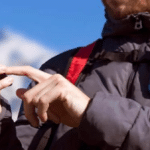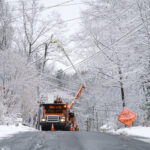In today’s hyper-connected world, technology isn’t just for entertainment or convenience—it’s a powerful tool for emergency preparedness. From smartphones to specialized apps and gadgets, there’s a wealth of tech at our fingertips that can be game-changers when it comes to staying safe during crises. Let’s dive into how you can tech up your emergency preparedness and why being savvy with gadgets might just save the day.
The Power of Smartphones: More Than Just Calls
Gone are the days when phones were just for making calls and sending texts. Smartphones are now Swiss Army knives of utility in emergencies. GPS capabilities can pinpoint your location for rescuers, while weather apps provide real-time updates to help you stay ahead of storms or natural disasters. Emergency alert systems integrated into modern phones can deliver critical notifications directly to you, ensuring you’re aware of any imminent dangers.
Apps for Every Crisis: Your Pocket Preparedness Kit
There’s an app for everything these days, including emergency preparedness. Apps like FEMA’s “Emergency App” offer a wealth of resources, from disaster safety tips to customizable checklists for building your emergency kit. Red Cross apps provide first aid guidance, while community-based apps like Nextdoor can keep you informed about local emergencies and resources. It’s like having a virtual emergency response team in your pocket.
Wearable Tech: Safety at Your Fingertips
Wearable technology goes beyond fitness tracking—it can also enhance your safety during emergencies. Smartwatches like the Apple Watch with built-in GPS and health monitoring features can alert emergency contacts if you’re in distress or provide vital health data to first responders. Wearable panic buttons or safety bracelets are discreet yet powerful tools for summoning help when needed, especially in situations where reaching for a phone may not be feasible.
Drones and Robots: Eyes in the Sky and on the Ground
The future is here when it comes to emergency response technology. Drones equipped with cameras and sensors can assess disaster damage, deliver supplies to remote areas, or even perform search and rescue missions in hazardous environments. Robotic systems designed for disaster response can navigate rubble, detect survivors, and relay crucial information to human responders, speeding up rescue efforts and saving lives.
Communication Tools: Stay Connected When It Matters Most
During emergencies, communication is key. Tech tools like satellite phones, two-way radios, and mesh networking devices can bridge communication gaps when traditional networks are down. Apps like Zello turn your smartphone into a walkie-talkie, allowing for voice communication with groups even without cellular coverage. These tools are lifelines for coordinating efforts and maintaining contact with loved ones during crises.
Home Automation for Safety and Security
Your smart home devices can do more than turn on lights or adjust the thermostat—they can also enhance your safety and security during emergencies. Smart smoke detectors can alert you to fires even when you’re away, while smart locks and security cameras provide real-time monitoring and control of your home. Integrating these technologies into your emergency plans adds an extra layer of preparedness.
Training and Simulation: Virtual Readiness Drills
Technology isn’t just about tools—it’s also about training. Virtual reality (VR) and simulation programs can immerse you in realistic emergency scenarios, allowing you to practice response strategies and decision-making skills. From fire drills to natural disaster simulations, these tools make preparedness training engaging and effective, ensuring you’re ready when the real crisis strikes.
Data Analytics and Predictive Models: Anticipating and Mitigating Risks
Behind the scenes, big data and predictive analytics play a crucial role in emergency management. By analyzing trends, historical data, and environmental factors, experts can anticipate risks, model potential disaster scenarios, and develop proactive strategies for mitigation and response. These technologies help authorities allocate resources more efficiently and make informed decisions during crises.
Accessibility and Inclusivity: Tech for Everyone
One of the strengths of modern technology is its potential for inclusivity. Emergency preparedness tech should be accessible to everyone, including those with disabilities or special needs. Innovations such as text-to-speech apps, visual alerts for the hearing impaired, and accessible interfaces for assistive devices ensure that everyone can benefit from tech-enabled safety measures.
The Human Factor: Tech is a Tool, Not a Substitute
While technology is a powerful ally in emergency preparedness, it’s essential to remember that human judgment and action are irreplaceable. Tech tools can assist and augment our capabilities, but they are not substitutes for preparedness training, situational awareness, and community cooperation. Ultimately, it’s the combination of human ingenuity and technological innovation that leads to effective emergency response.
Conclusion: Be Tech-Savvy, Be Prepared
In a world where emergencies can strike unexpectedly, being tech-savvy is a superpower. From smartphones to drones, wearable tech to data analytics, the possibilities for enhancing emergency preparedness are vast. By embracing these tools and staying informed about technological advancements, we can all play a part in creating safer and more resilient communities. So, tech up your emergency preparedness—it might just be the smartest thing you do.
Whether you’re a gadget enthusiast or a tech novice, there’s something for everyone in the realm of emergency preparedness tech. Stay curious, stay prepared, and stay safe.







